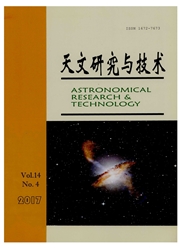

 中文摘要:
中文摘要:
电子倍增CCD(Electron-Multiplying CCD,EMCCD)的电荷倍增驱动电路是实现这类CCD器件片上增益功能的关键。介绍了TC285SPD电荷倍增驱动器的参考电路的结构,详细分析其电路原理,并对该电路进行了PSpice仿真分析。对电荷倍增驱动电路的3种不同的印刷电路板(Printed Circuit Board,PCB)布局布线方案进行了实际测试,分析了存在的问题,找到了该电路PCB设计的正确方法。
 英文摘要:
英文摘要:
The driving circuit for an electron-multiplying CCD (EMCCD) is key to achieve its on-chip gain. This paper introduces a structure of the driving circuit recommended by the TI for its TX285SPD, analyzes the operating principle of the circuit, and simulates the driving circuit by the PSpice. The circuit is recommended to use a clock with a frequency of 35MHz and a voltage ranging from -4V to 22V. Our EMCCD camera requires a clock with a frequency of 30MHz and a voltage ranging from -4V to 22V. Although results from simulations of the driving circuit show it can meet our requirements, in practice the large frequency and voltage differences cause difficulties for our PCB (Printed Circuit Board) design for the driving circuit. Three different PCB schemes have been designed and the corresponding PCBs have been made. All these PCBs are tested and the input and output waveforms of the clocks are measured. The PCB of the first scheme uses a clock with a frequency of 30MHz and a voltage ranging from -4V to 13V, the PCB in the second design uses a clock of 40MHz and a voltage of -4V to 23V, and the clock in the third design also uses 40MHz and a voltage of -4V to 23V. But the third design is better than the second design in the quality of waveforms. We discuss some possible problems in the designs, and point out the correct design for the driving circuit. The advantages of integrated power design and integrated signal-processing design are obvious. We finally summarize some design skills and recommendations for the preferred design of driving circuits.
 同期刊论文项目
同期刊论文项目
 同项目期刊论文
同项目期刊论文
 期刊信息
期刊信息
